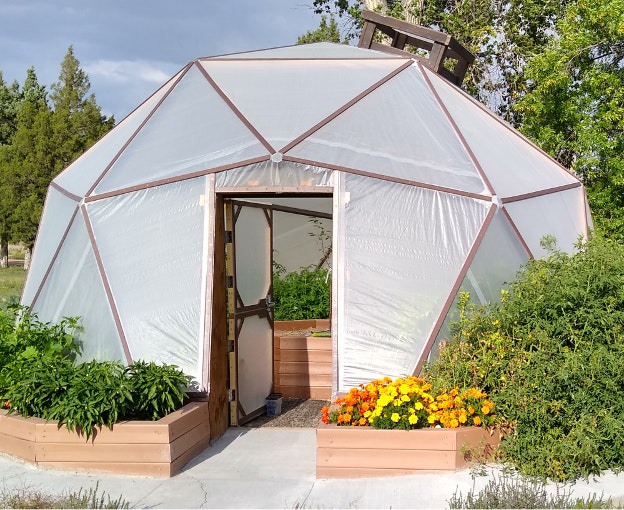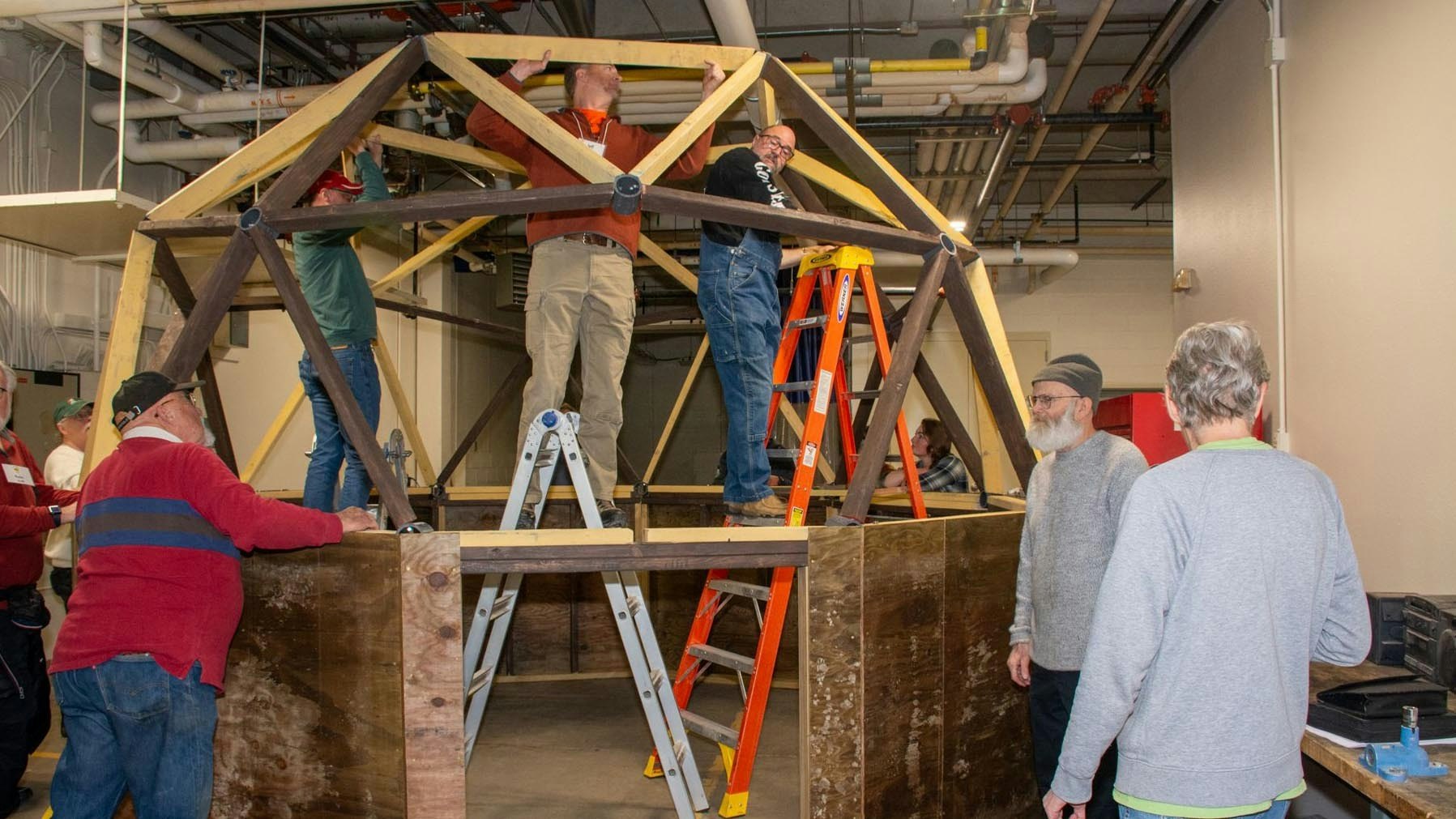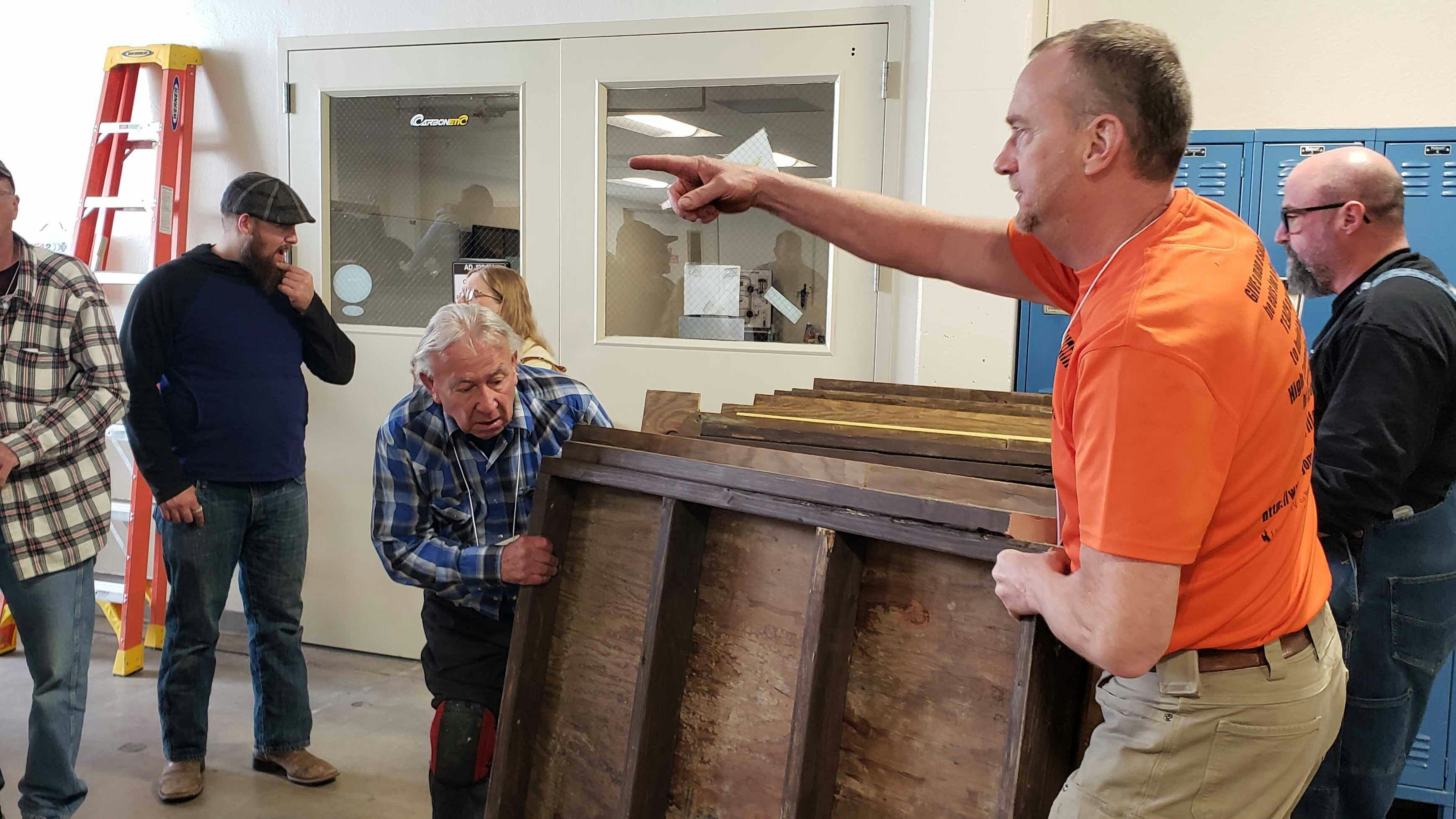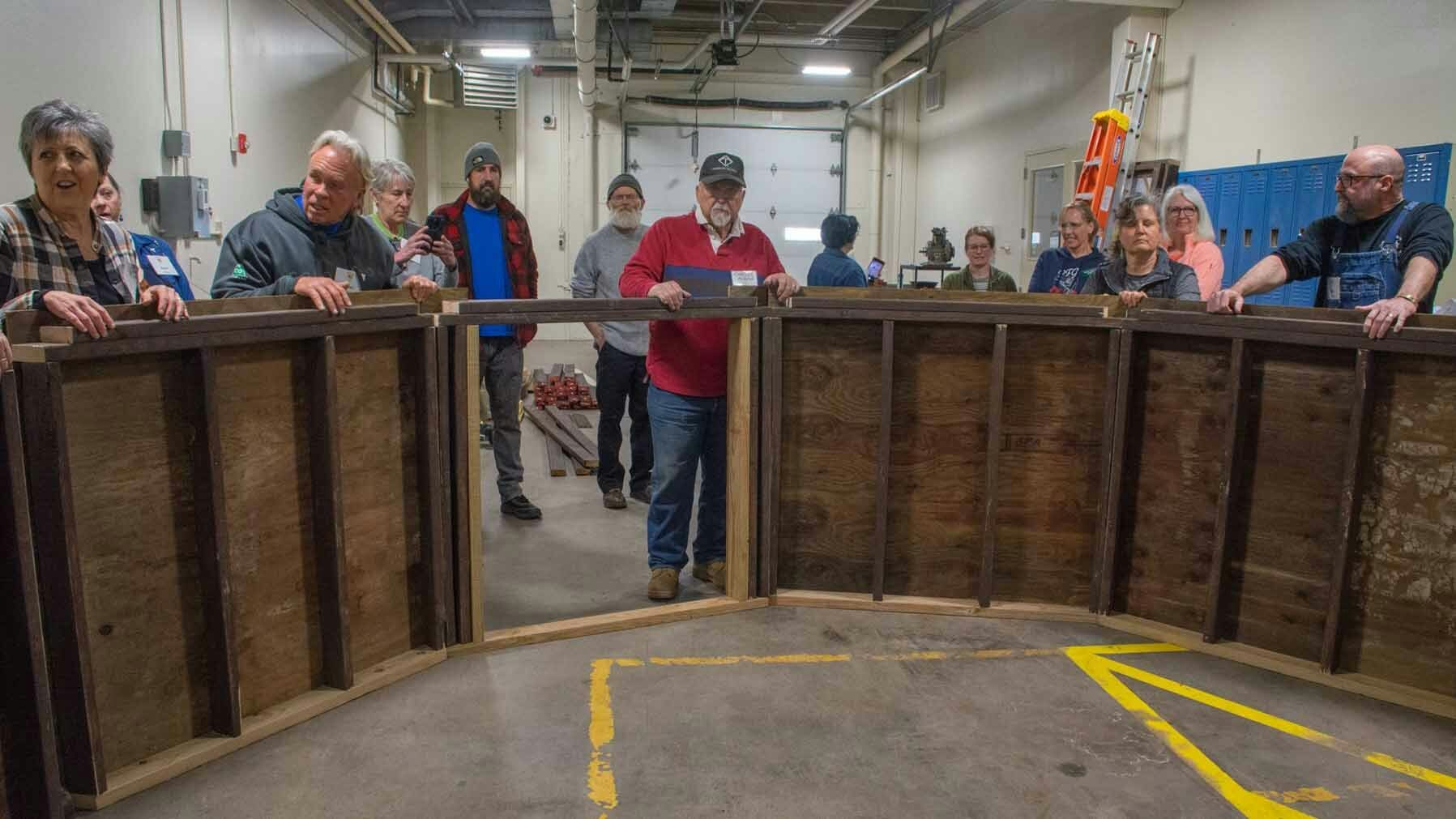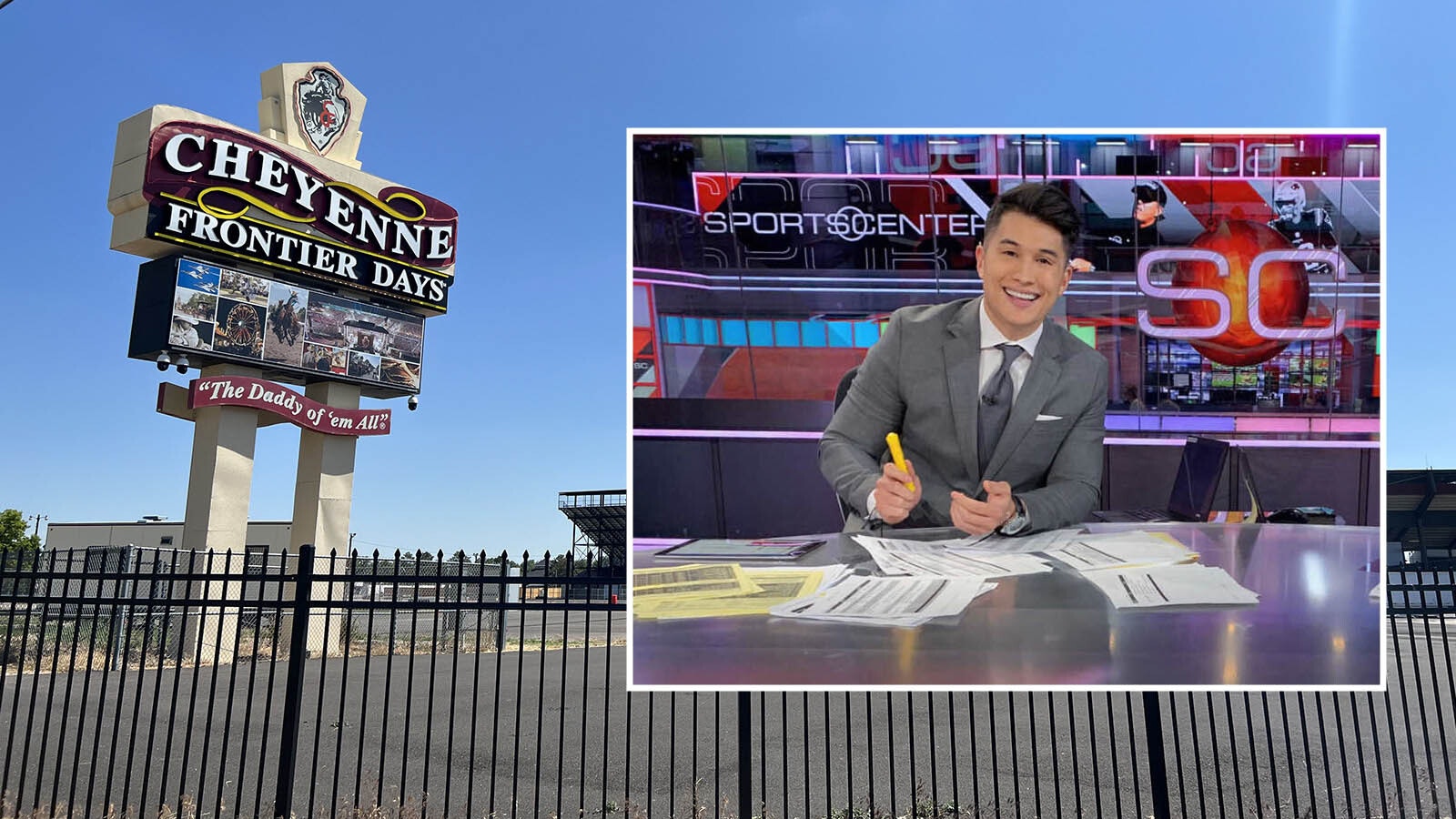The Wyoming growing season is a challenging puzzle for the gardener who wants to grow warm-season crops like tomatoes, sweet corn, and watermelon.
An extra two months of growing time would be huge, but sounds almost too good to be true.
But it's for real, and a Wyoming Extension Agent is helping to spread the gospel of season extension across the Cowboy State, for the sake of tomato lovers everywhere.
Small acre horticulture specialist Jeff Edwards builds geodesic domes - 30 of them so far and counting - in "train-the-trainer" workshops in communities ranging from Cheyenne and Sundance to Torrington, Casper, and others.
Tomatoes are a particular beneficiary. As a sub-tropical plant, it gets a little sulky if temperatures fall below 55 degrees at night. Such low temperatures can cause unsightly scarring of fruits, commonly known as cat facing.
Season extension not only helps prevent this, but an extra two months of production for indeterminate tomato vines means a huge boost in yields, which never hurts a gardener's feelings.
Futuristic Look, But Old Concept
Geodesic domes are not really a new invention, though the interlocking triangles that form these domes certainly look like something that came from a Space Age movie.
The first geodesic dome was invented just after World War I to house a planetarium for Carl Zeiss Jena's chief engineer, Walther Bakersfield.
Later, Buckminster Fuller, would coin the term "geodesic" to describe the domes, which helped popularize these hardy structures.
Edwards, meanwhile, did not settle on geodesic domes for Wyoming season extension right away. He started out building hoop houses in 2009 or so and has conducted 90-some workshops to teach others how to Wyomingize them for the Cowboy State.
But one day a school district in Baggs asked Edwards for help putting together a geodesic dome kit the school purchased. They couldn't make heads or tails of the instructions.
Edwards and colleagues Ted Craig and Del Jimenez, who often help Edwards construct hoop houses, agreed to try and figure it out for the school.
"We read the instructions three times, and still couldn't make heads or tails of it," Edwards said. "Finally, we called the guy who sold the school the kit and his response was, 'Well if you're too stupid to figure it out, you shouldn't be putting it together!'"
As Edwards and his colleagues studied the kit further, they realized its materials probably weren't really right for Wyoming anyway.
"At that point, we decided maybe (the extension office) could serve a little purpose here and produce a manual on how to build these things for Wyoming," Edwards said.
Edwards went to work in his shop cutting up pieces and parts for the first Wyomingized geodesic dome. Once he and his colleagues had built a few of them for community gardens, parks, and other public spaces, he realized the structures were actually superior to hoop houses.
"They're so much easier to build than a hoop house," Edwards said. "And they're sturdier. I mean, they hold up to our weather so much better."
Those interlocking triangles each rest on the other, a geometry that helps distribute weight evenly across the entire structure, making it crush resistant.
They stand up very well to the snow-dumping weather common across the Cowboy State.
"Two feet of snow on top of most any structure can potentially crush it," Edwards said. "But the domes - we've got one in Afton right now that's got 4 or 5 feet of snow on it right now, and I'm pretty sure it's doing just fine."
A woven polyethylene cover, instead of traditional greenhouse film, makes the domes resistant to hail as well. The polyethylene, meanwhile, lets in plenty of light.
"This woven polyethylene product provides about 85 percent light transmittance," Edwards said.
More Domes Than Ever
Edwards is able to build about six geodesic domes each year for public spaces. He often stages them as "train the trainer" events, so that he can spread the knowledge of how to build the domes to more groups of people. The latest of these was part of the Wyoming Bee College and Garden To Market Conference that was held in Cheyenne.
Some of Edwards' workshops cover how to cut all the parts and pieces for the kits, one of which will fit neatly into the bed of a single, medium-sized pickup truck.
So far, through these efforts, Edwards has placed about 30 geodesic domes across the Cowboy State in places from Casper and Cheyenne to Torrington, Sundance, Wheatland, Guernsey, Fort Laramie and other Wyoming communities.
He's also partnered up with a group on the Wind River Indian Reservation, which is now able to produce all the parts and pieces. They've put up about 10 domes on the reservation so far.
"The mission now is just to get people the understanding of how to build them, so they can be more proactive for specialty crops in basically any garden, and extend the season in Wyoming," Edwards said.
Season Extension Plus
Research suggests gardeners add about 30 growing days on both the front and back end of whatever their existing growing season is for 60 days total season extension.
Edwards, however, has seen that the actual length of season extension can be much greater than that, depending on what a gardener is trying to grow in them, and where that gardener is located.
"Here in Goshen County, we can produce almost all year round," Edwards said. "And that's going to be things like greens and cole type crops."
Cole crops refer to broccoli, cauliflower, kale, and other brassicas.
The season extension Edwards gets is also good enough most years that his strawberries and raspberries are already putting out new growth by March 20.
"That wouldn't ever happen in Wyoming outside," Edwards said.
But the structures do more than just extend the season, he added.
"They protect from weird frost, from hail, from wind, and all those things that shear off plants," Edwards said.
